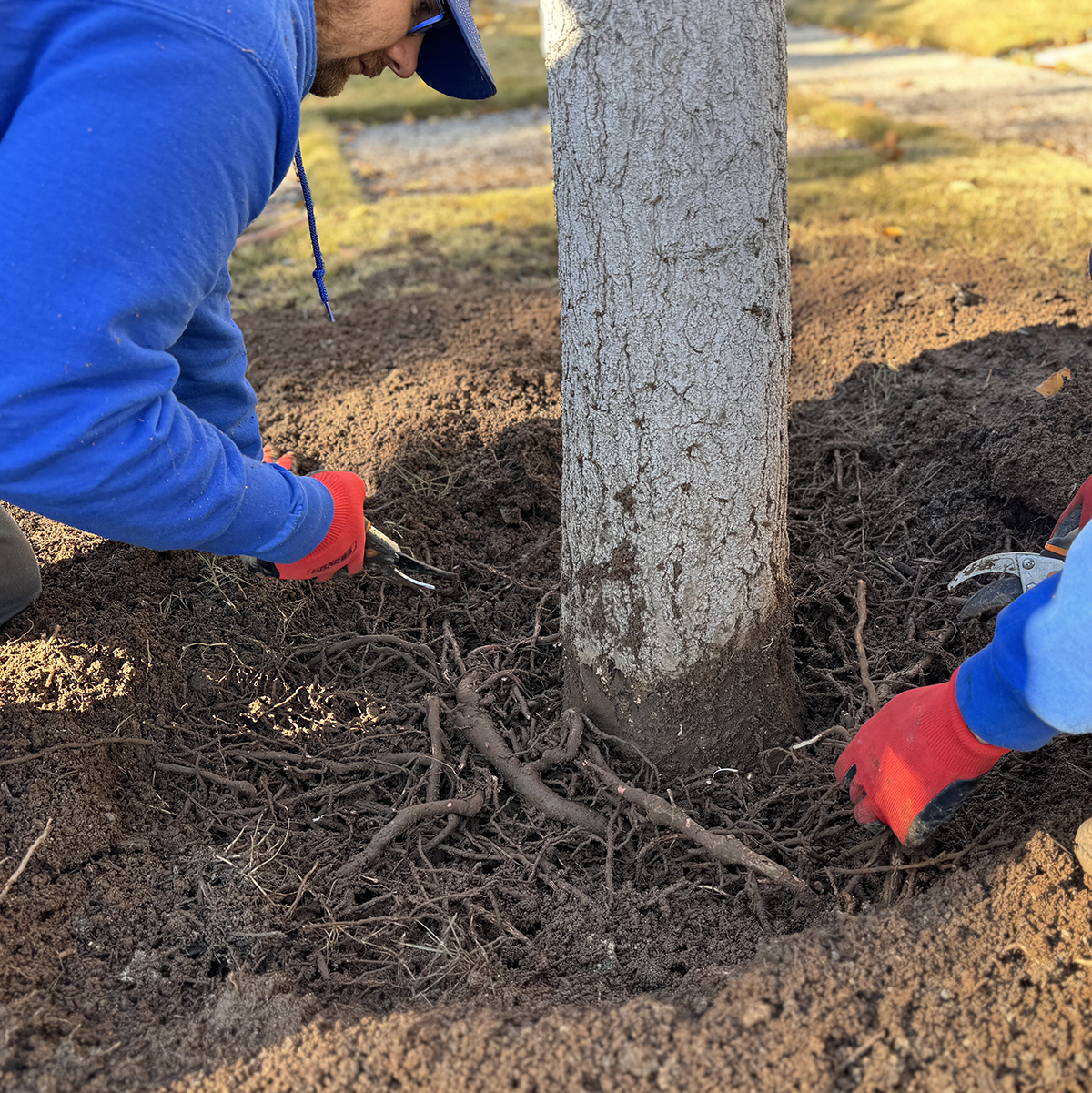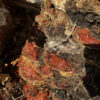How Does Soil Health Impact Tree Growth?

Understanding the connection between soil health and tree growth is crucial for anyone interested in keeping their landscape healthy. Healthy soil forms the foundation for robust and thriving trees, impacting everything from their size to their resilience against pests and diseases.
What is Soil Health?
Soil health refers to the condition of soil and its ability to support plant and tree growth by providing necessary nutrients, retaining water, and hosting a range of microorganisms and insects that contribute to a balanced ecosystem.
At the core of soil health is its fertility, meaning its capacity to provide essential nutrients to trees and plants. Healthy soil is rich in organic matter, which not only supplies nutrients but also improves soil structure and water-holding capacity. Soil health is akin to a ‘superfood’ for tree roots, promoting stability and growth.
Healthy soil also includes a robust community of microorganisms, such as bacteria and fungi, that play crucial roles in nutrient cycling and disease suppression. These microbial communities are often invisible but crucial to the functioning of soil ecosystems. Microorganisms in the soil are foundational to soil fertility and ecosystem services like water filtration and carbon sequestration.
Beyond nutrients and microorganisms, soil health involves physical properties such as texture and structure, which affect root penetration and water movement. Loamy soil, with a balanced composition of sand, silt, and clay, is generally ideal for tree growth. It provides good aeration, holds moisture well, and supports root development.
Why Does Soil Health Matter for Trees?
Trees rely on healthy soil for vital nutrients and water, which are essential for growth, development, and survival. Poor soil health can stunt growth, make trees more susceptible to diseases and pests, and affect their overall lifespan.
A tree’s health and vigor are directly tied to the soil it stands in. Rich, nutrient-dense soil provides trees with everything they need to grow strong and resilient, including nitrogen, phosphorus, and potassium. These essential nutrients act like fuel, powering various physiological processes in trees. Without them, trees can suffer from stunted growth.
Moreover, healthy soil supports a tree’s ability to withstand environmental stressors such as drought, heavy winds, and pest infestations. Trees with strong, deep roots anchored in healthy soil generally fare better during extreme weather conditions. The interconnected root systems and soil microorganisms create a resilient network.
Soil health is also pivotal to the tree’s root health. Poor soil structure or compacted soils can limit root expansion, reducing the tree’s ability to absorb water and nutrients. In urban environments, addressing soil compaction through techniques such as air spading can significantly improve tree health.
Key Components of Healthy Soil
Healthy soil typically contains a balanced mix of organic matter, minerals, air, and water. It also harbors a diverse microbial community that helps break down organic materials and fix nitrogen, making nutrients accessible to trees.
Organic matter, such as decaying leaves, twigs, and root exudates, contributes to soil structure and fertility. This component is essential for storing moisture, supporting microbial life, and providing a slow-release source of nutrients. Organic matter acts as a natural nutrient reservoir, enhancing the soil’s ability to support trees.
Additionally, soil’s physical properties, such as texture and pH, significantly influence its health. Loamy soil, which balances sand, silt, and clay, is ideal because it ensures effective drainage and aeration while retaining essential moisture. Soil pH near neutral is often favorable for trees, as it maximizes nutrient availability.
Beneficial soil organisms such as mycorrhizal fungi form symbiotic relationships with tree roots, extending their reach into the soil and enhancing nutrient uptake. This complex interaction not only aids in tree growth but also builds a resilient ecological community underground.
How to Improve Soil Health in North Texas for Better Tree Growth
Soil in North Texas isn’t naturally loamy. Our soil type depending on zones are Cross TImbers, Grand Prairie, or Texan Blackland Prairie. So how can we achieve healthier soil in the DFW metroplex?
Improving soil health can be achieved by adding organic compost& mulch, promoting proper drainage, reducing soil compaction, refrain from using weed & feed products, and having a diversity of native plants. These practices enhance the soil’s nutrient content and structure, supporting healthy tree growth.
One of the most effective ways to enhance soil health is through the addition of organic matter. Composting provides essential nutrients and fosters a diverse microbial ecosystem, turning the soil into a living community that supports trees vigorously.
To tackle soil compaction—common in urban environments where foot traffic and construction are prevalent—consider using aeration techniques. Air spading, a less invasive method, can significantly relieve soil compaction, allowing roots better access to air and nutrients.
Planting native plants is also highly beneficial. These plants play a crucial role in enriching the soil by fixing nitrogen and protecting against erosion. Native plants act as a foundational layer of organic material, nurturing the soil health for future tree growth.
Signs of Unhealthy Soil and Impact on Trees
Symptoms of unhealthy soil include poor drainage, nutrient deficiencies, and a lack of biodiversity. These issues can result in stunted growth, discoloration of leaves, and weak root systems, compromising tree health and vitality.
Diagnosing soil health problems often starts with observing the tree’s appearance. Chlorosis, or yellowing of leaves, can indicate nutrient deficiencies such as lack of nitrogen or iron. Stunted growth or leaf discoloration might suggest poor soil conditions that require amendments.
In cases of severe soil compaction, water pooling after rain can occur, preventing roots from accessing air and nutrients. This can lead to stress and decline in tree health. Poor soil structure may result in shallow rooting, reducing the tree’s stability and making it susceptible to weather damage.
A significant decrease in soil biodiversity is another red flag. Healthy soil should have a bustling community of microorganisms, but depleted soils may lack this activity, affecting nutrient recycling and availability. Soil tests can provide vital information on soil composition and help decide on necessary interventions.
What Damages Soil Health?
Chemical exposure; pouring used water that has cleaned paint brushes, chlorine from pools, and even weed & feed products. These items when released in the soil will kill beneificial microbioms.

At Texas Tree Surgeons we love trees. Soil health is vital for the growth and sustainability of trees. By ensuring that the soil is rich in nutrients, well-drained, and teeming with beneficial organisms, we can promote healthy tree growth. Understanding the science behind soil health and its impact on trees enables us to make informed decisions that affect our personal landscapes and the environment as a whole. We are all connected. Plant health and human health are intertwined.
Related Blogs
Similar blogs related to this topic


Ganoderma | Fungal Disease
Prevention is key to preventing your trees from getting Ganoderma. Ganoderma, like Kretzschmaria, is present in the soil, and infects a tree when its roots become damaged and lose their protective bark. Ganoderma Red Flags …
Read more

Root Pruning on Young Trees
Best case scenario is that a young tree’s roots are pruned prior to planting, but that doesn’t always occur. Following best practices for planting new trees will ensure they have the best chances for growth…
Read more

Kretzchmaria | Fungal Disease
There are a wide variety of different fungal species that can live in the soil around trees. Some are beneficial, and are part of a healthy soil ecosystem. Others, however, like Kretzchmaria also known as…
Read more
